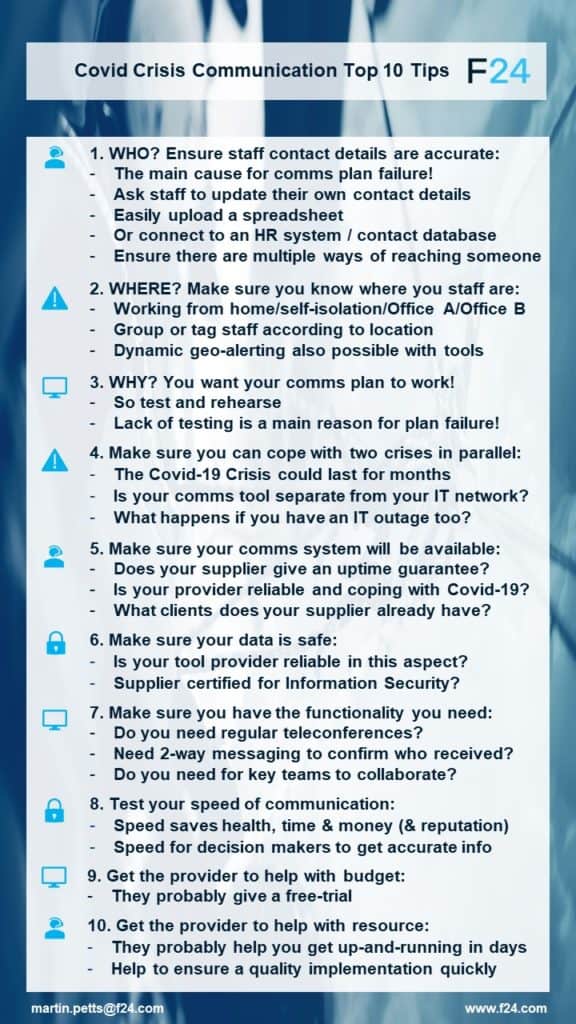Plan activation – during this coronavirus pandemic, the majority of companies will be referring to either their business continuity plan or pandemic plan.
The question I am discussing today is, when there is an issue which requires a Business Continuity Plan to be activated, who is responsible for the plan activation? Is it the Business Continuity team or the affected department?
In the current pandemic scenario, it is likely to have been Top Management, Emergency Management or Business Continuity Management who have activated the plan. However, in many companies there will also be no formal process for activation.
Feeback from BCP Builder Community on LinkedIn:
Communication
- A Business Continuity Plan and the Crisis Communications Plan should be interlinked and fully documented. It should define protocols on who is going to activate the plan for different scenarios. Normally for large companies it should be the designated Head of Business Continuity, because serious incidents will require coordination among many departments. For smaller companies where business activity assignments are ad hoc, the department concerned can initiate their own plan.
- Within any organization there should be a clear notification process to speed up plan activation and incident response.
- Communication is the most important thing in times of disaster. Who to contact, necessary teams to get involved and regular updated communication to gather information and progress on the incident situation, whether it impacts certain departments or the whole company.
- Here are some tips around what you should be thinking about when planning your pandemic communications plan:

Collaboration
- Dependent on the incident and severity, there should be a meeting where business leads and department heads/recovery team leads meet, discuss the situation and decide if the BCP needs to be invoked. In most organizations, a dedicated BCP team may not be large enough to take on all BCP tasks, so the real ownership should be with the business. This means the affected department is responsible, but they need to involve the business lead and also the BCP team (as well as any other departments that need to be notified). A business lead could override the decision by taking on the risk of not invoking their BCP.
- The business continuity team should ideally act as a second line of defense function. Therefore, any activation should be executed by the “business” – the affected department or a Crisis Manager.
Scenario-based activation
- If there was an incident which impacted a localized area, imagine the sprinklers going off in part of an office. The process owner could activate a Business Continuity solution such as “work from home”. This may be a temporary measure while the area is cleaned up and could be handled by the local incident team. If alternatively the building burns down and strategic input is required then the BC plan would be activated by the Crisis Management Team to manage the long term continuity response.
- There could be a different type of BCP based on critical incident scenarios of the facility operation, IT and technology, procurement, finance, administrative, production, etc. When a disruption occurs, the unit should notify critical staff for an emergency meeting to discuss their incident response procedures. Simple incidents can be managed at departmental level. Emergency level and extremely critical level incidents should be escalated to the Emergency Management or Business Continuity Management Team to achieve the best performance in response. Without this high level oversight, there could be misunderstandings or avoidable mistakes which would need to be explained during a debrief.
If you want to increase your Organizational Resilience, start with preparing a Business Continuity Plan and check out BCP Builder’s Business Continuity Planning Templates.




